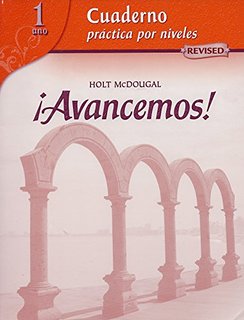
All Solutions
Page 201: Gramatica B
The purpose of this exercise is to practise the use of the verbs “ser” and “estar” in Spanish.
For this exercise, you will make four different sentences. You are given the grammatical subject, the verb and its predicatives. You will link these elements in full sentences by choosing the appropriate conjugated form of the verb according to the subject, and by matching the predicative with the element it refers to. Given the small number of adecuate varieties, use the below examples as a reference.
1. Laura es inteligente.
2. Silvia y Andrés están ocupados.
3. Camila y yo somos de Ecuador.
4. Ramiro está cansado.
The purpose of this exercise is to practise the use of the Spanish verbs “ser” and “estar”.
In this exercise, there are five incomplete sentences. You will read them carefully to understand the meaning. Then, you will complete them by choosing the appropriate conjugated form of either “ser” or “estar”. You will choose the adecuate verb according to the meaning. Think permanent and temporary features, or time and location etc., respectively. Below, you will find an analysis for each sentence.
1. Javier es maestro.
The first sentence states that Javier is a teacher. Becoming a professional or mastering a craft is considered a permanent feature. This is why you would choose the verb “ser”.
Example: Ana es abogada, pero trabaja como programadora.
In this sentence, focus on the last bit: it contains the preposition “en”, which points that this is a complement of location. Automatically, you would opt for the verb “estar”.
Example: Jorge está en casa.
Even though both verbs could be used in theory, for this sentence you would choose the verb “estar” because anger is generally not a permanent state.
Example: Mi perro está feliz cuando come.
In this task, you would focus on meaning. One either is or is not a good friend, i.e. one does not intermittently switch between the two. Thus, you would choose the verb “ser” because this is a permanent quality.
Example: Tu amigo es una buena persona.
Similar to the third sentence, being moved by someone or something is generally not a permanent condition. Hence, you would use the verb “estar”.
Example: Estoy ilusionado de verte.
Note: Since the grammatical subject is esentially “you (pl.)”, in Spain you would use “estáis”, which in the Americas is not used at all. Instead, in American Spanish you would say “están”.
2. están
3. estamos
4. eres
5. estáis / están
The purpose of this exercise is to practise writing in Spanish.
For this exercise, you will write two complete sentences about two of your friends. You will describe them and say where they are from. For these values, you will use the verb “ser”. Given the personal nature of this exercise, only use the below examples as a reference.
1. Begoña es una chica inteligente, alta y guapa. Es de Zaragoza.
2. Martín es bajo, atlético y trabajador. Es de Cuba.

